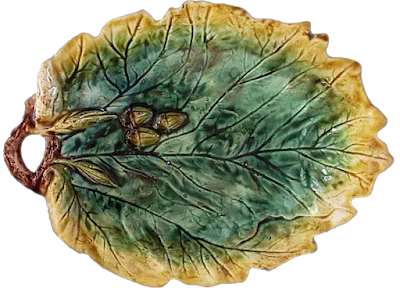Having followed the antiques market for a very long time, I’m still somewhat surprised at how certain pieces of majolica are still often attributed to the wrong manufacturer. If every single piece of pottery was clearly marked, this wouldn’t be a problem but unfortunately that is not always the case. In these instances one needs to rely on other characteristics like glaze and style and company literature. Here are the pieces I see most frequently attributed to the wrong company.
The Honey Bear with Spoon Jug
For as long as I can recall this piece has been attributed to Joseph Holdcroft. That comes from early references like the Marks books which are filled with inaccurate information including attributing this particular piece to Holdcroft. There is nothing about this pitcher that says Holdcroft. The glaze is wrong, the base pottery is wrong and the underside color is wrong. The real manufacturer of the piece is the George Skeys Wilnecoate Works. The craftsmanship and glaze is immediately recognizable as the work of that pottery. Additionally, marked examples have surfaced.
Oak Leaf with Acorns Tray
The number of times I have seen this piece attributed to the Etruscan Works are too numerous to count. The glazing looks nothing like that of the Etruscan Oak bread tray but still the confusion continues. Although never marked the piece I believe was made by several potteries but Griffen, Smith & Co. is not one of them . The glazing of the underside varies but one treatment appears to be by Adams & Bromley.
Begonia Leaf Pickle Dish
While the Etruscan Works became famous for their begonia leaf dishes, not every majolica begonia dish is made by that company. The American dish is almost always marked and never has a saw tooth edge. It also is never gazed in turquoise, a color never used by the Phoenixville company. While we don’t know precisely who potted these dishes the manufacturer is most likely English in origin.
Pond Lily Plate
I really don’t know where this attribution came from but dealers are too frequently identifying this plate as being made by Holdcroft. It is not. It was made by Adams & Bromley. While it is true that Forester made a dessert stand and a center using this patterned plate they did not make the plate. Now there were other companies, both American and Continental, that copied this plate, but Holdcroft was not one of them.
While the world of pottery attribution can often be a tricky one, the pieces mentioned here are four of those most commonly misattributed.







No comments:
Post a Comment